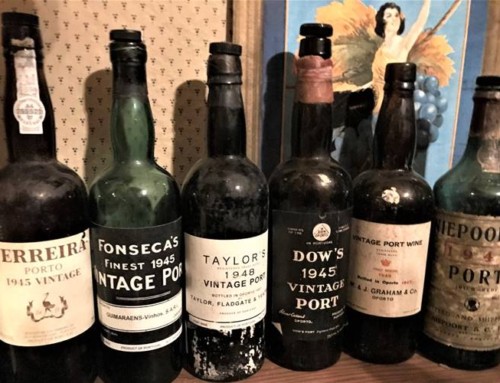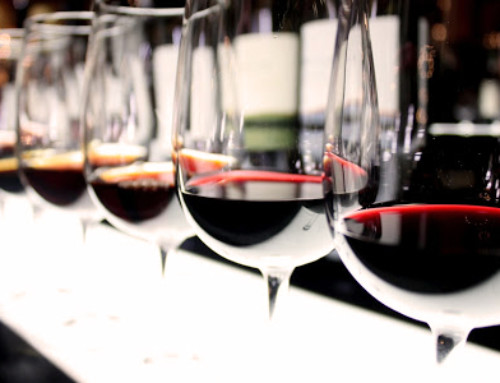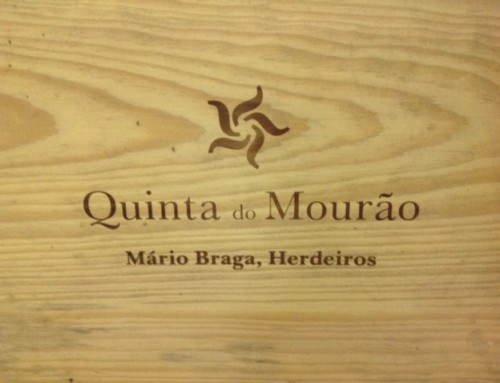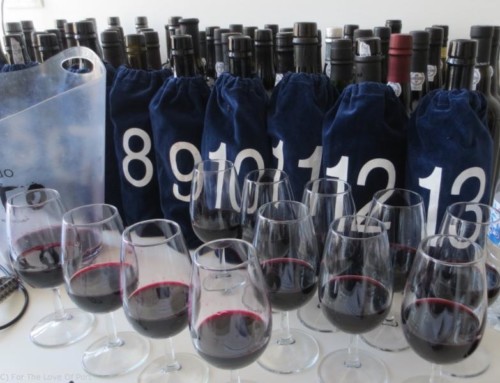In my quest to get involved in helping to protect the name of Port wine here in the USA, the first initiative was to help drive the Center for Wine Origins’ launching of #PortDay in January. Natural progression from there led me to Sam Heitner, who is the Director of the CfWO. We initially had a phone discussion in which Sam brought me up to speed as to the efforts already under way to protect place names, in this case specifically Port wine. Afterwards, I felt it was imperative to help others to appreciate what the Center for Wine Origins has been able to achieve in recent years and what progress is in the works.


RH: What is the relationship between the Center for Wine Origins and the IVDP?
SH: The Center for Wine Origins was founded in 2005 by the wine growing regions of Champagne, France, and Porto, Portugal. The Center acts as a representative for the Comité Interprofessionnel du Vin de Champagne (CIVC) and the Instituto dos Vinhos do Douro e Porto (IVDP) here in the United States.
RH: Can you please explain what accords have been reached between the EU and Napa, Australia and other wine growing areas in regards to protecting the name of Port wine and when these agreements took effect? Also, how do the “grandfather” clauses work for companies like Gallo and Constellation Brands, etc.?

SH: In July 2005, four American and three European wine regions signed a transatlantic agreement – The Joint Declaration to Protect Wine Place & Origin. They were embarking on an effort to educate policymakers and consumers around the world about the importance of place names. Since the initial signing, eight more wine regions have joined and many other efforts have been made both domestically and internationally in regards to place name protection. The present signatories to the Declaration are: Champagne, Jerez, Napa Valley, Oregon, Porto, Washington State, Walla Walla Valley, Chianti Classico, Paso Robles, Sonoma County, Tokaji, Victoria, Western Australia, Long Island and Rioja.
After over 20 years of negotiations, the EU and U.S. signed the first phase of the Wine Accords banning the future misuse of 16 wine place names, including Champagne, Port, Sherry, Chablis and Burgundy. Only those who had approved labels including these terms before the signing of the agreement were granted a limited exception from the complete ban. Therefore, any wine producer that had a COLA including one of the 16 wine place names named in the agreement before 2006 can continue to use the term “Champagne” on their products and it must be accompanied by a true location such as “California Champagne” or “New York Port.” There are a wide variety of companies that, unfortunately, misuse these terms due to the exception.
RH: The Center for Wine Origins is not the actual lobbying group, is it the “Declaration for Place” organization, and can you explain exactly what their involvement is, how they are funded and on whose behalf they actually lobby for?
SH: The Center for Wine Origins does not engage in any lobbying activities here in the United States. The campaign is financed with support from the European Union, as well as France and Portugal. The Declaration of Place is comprised of 15 wine growing regions around the world that seek to ensure all wine growing place names are protected.
RH: Within this context, can you explain the efforts and role of the USTR trade representative group and how they’re involved in lobbying for and/or negotiating legislation?
SH: The United States Trade Representative represents the U.S. in international negotiations and, therefore, represents the United States in the ongoing EU-U.S. Wine Accord negotiations.
RH: What are the 16 wine place names that are now protected, as part of the accords? When it comes to port-style wine … what are some other suggested names to replace Port on labels for those that can no longer use that name legally?
The sixteen semi-generic names are Burgundy, Chablis, Champagne, Chianti, Claret, Haut Sauterne, Hock, Madeira, Malaga, Marsala, Moselle, Port, Retsina, Rhine, Sauterne, Sherry and Tokaji.
There are numerous alternate names available for all of these products. We have found that when regions and producers themselves create their favored term, they are more likely to support it. This was the case with Cava, Australian sparkler or the wide spread use of “Sparkling wine” in the United States. Therefore we support producers and regions that proudly come together behind their own special name for the style of wines they produce. An example of this can be seen in Australia where producers met and agreed upon the terms they would use moving forward when the term “Port” was no longer appropriate in Australia.
RH: What do you see as some of the more significant obstacles to stronger legislation being passed in the USA in the future?
SH: The United States has numerous quality wine producing regions and is now the largest consumer of wine in the world. As more and more Americans understand the importance of all wine locations, we believe that more and more US wine producers will proudly proclaim where their wines come from and opposition to truth-in-labeling will weaken.
RH: Without getting into “punitive measures” can you please elaborate on what type of enforcement takes place when a new winery in a region covered by the agreement, (to protect the place name of Port wine) is either deliberately or unknowingly ignored, but reported to the TTB?
SH: TTB would be the best respondent to this question.
RH: What do you foresee happening with wine place name protections in emerging markets like China, Russia and India?
SH: Wine sales in emerging markets is expanding. As such, legal protection in these markets is being examined very closely. Champagne has legal protection in China and just received third-party protection in India. Other world renown wine regions also have strong name protection regimes in many emerging markets. It is our hope that as more and more countries increase their understanding of wine places, then all wine growing place names will be protected and consumers will have easy to read information about where their wine comes from.

RH: Beyond getting this message out to wine consumers and those that love Port wine, and drilling home the message that, “Port is from Portugal” … is there anything else that FTLOP can do to support the effort of protecting the name of Port?
SH: We believe that when consumers buy a bottle of wine, they should be able to rely on the truthfulness of the bottle’s label. Location is particularly important to wine because the grapes used in the production of a particular wine gain specific attributes due to the soil, air, water and weather conditions of the place in which they are grown. Anything you can do to carry on this message and further this education is very much appreciated.
RH: Is there anything that I’ve left out that you feel would be important for our readers to know?
SH: One thing we have found is that many consumers don’t know how to actually read a wine label. When it comes to Port, the seal of authenticity is what shows you that the wine truly comes from Portugal, but there are many more things you can learn from a Port wine label as well. The label shows the style and category, the producer, the alcohol content, and occasionally the year it was bottled if it is a single year vintage.







Leave A Comment
You must be logged in to post a comment.